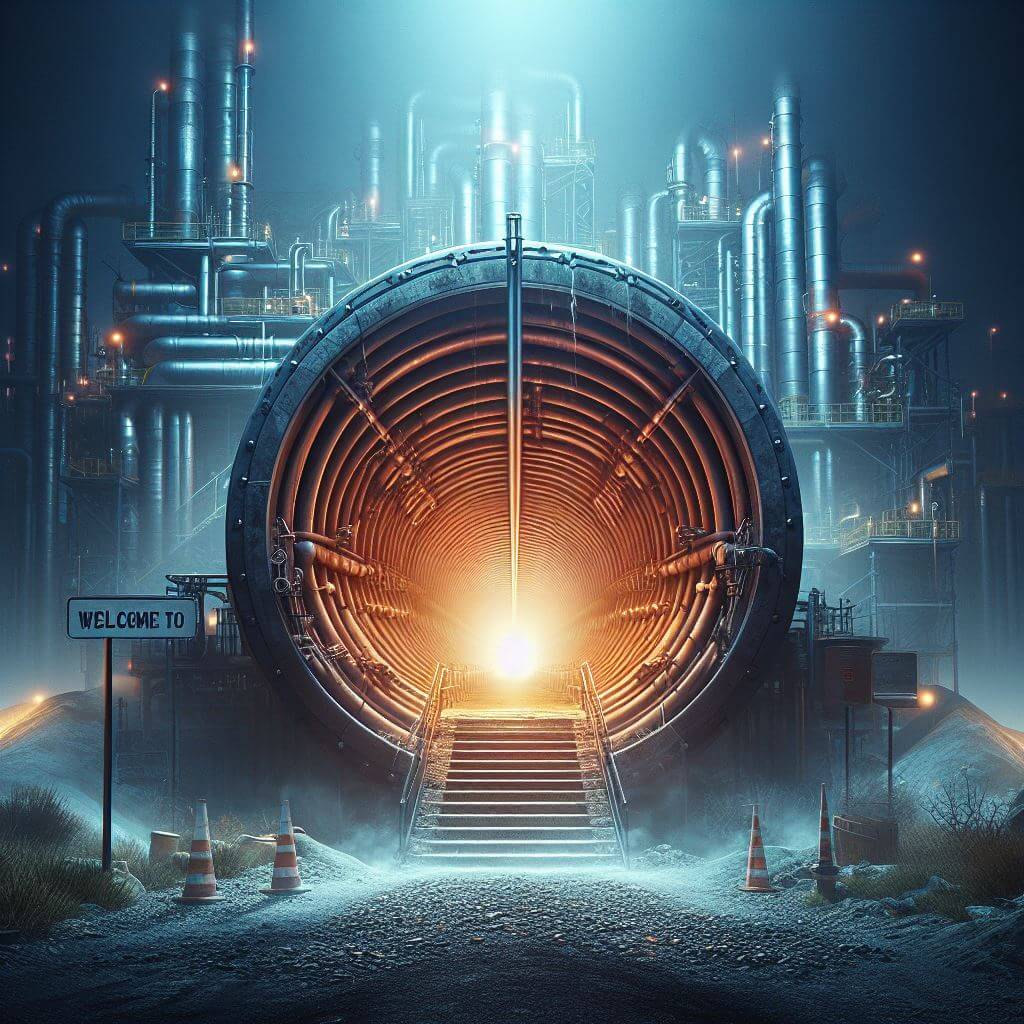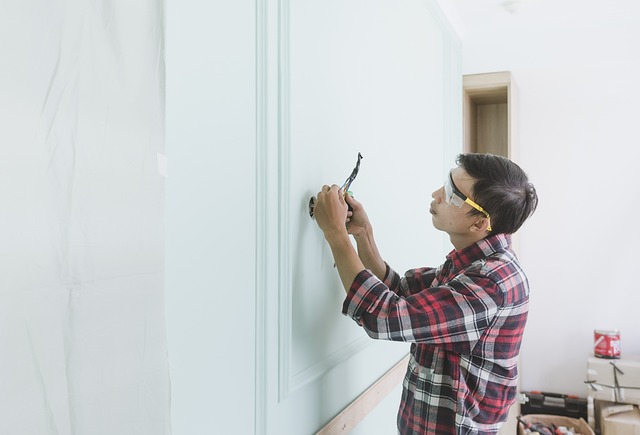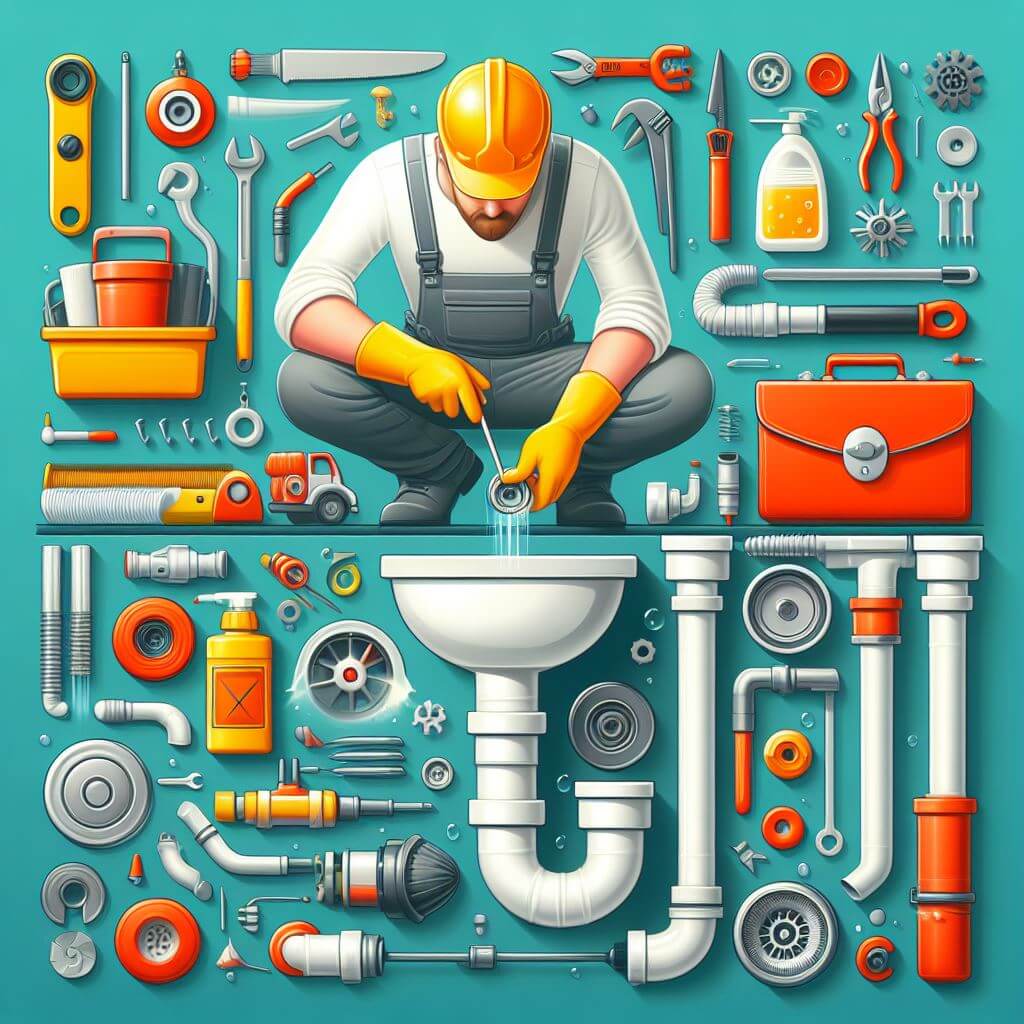Comprehensive Guide to Pipe Inspection: Preventing Damage
Pipe Inspection: Safeguarding Vital Systems
Pipelines, the unsung heroes of industries and homes alike, silently facilitate the flow of essential resources like water, gas, and chemicals. However, lurking within these conduits is an unseen threat—wear and tear. Unchecked, this can unleash catastrophic consequences. Welcome to an in-depth exploration of pipe inspection, your gateway to safeguarding these crucial systems from potential disasters caused by wear and damage.
Pipe Inspection: Safeguarding Vital Systems
Pipelines, the unsung heroes of industries and homes alike, silently facilitate the flow of essential resources like water, gas, and chemicals. However, lurking within these conduits is an unseen threat—wear and tear. Unchecked, this can unleash catastrophic consequences. Welcome to an in-depth exploration of pipe inspection, your gateway to safeguarding these crucial systems from potential disasters caused by wear and damage.
In this comprehensive guide, we unveil the pivotal role of pipe inspections in not just identifying issues but in averting disasters. From the nuanced techniques used to detect corrosion, leaks, and structural weaknesses to the advanced tools revolutionizing the inspection landscape, we dive deep into every facet. Whether you’re in the industrial domain grappling with corrosive substances or a homeowner concerned about leaky pipelines, this guide equips you with the knowledge and tools to ensure the longevity and safety of your pipe networks.
Join us on this journey through the intricate world of pipe inspection, where early identification is the key to preventing potential hazards and where meticulous maintenance ensures the uninterrupted flow of essential resources. Together, let’s unravel the mysteries within pipelines and fortify these lifelines for generations to come.
Inspection Techniques and Preventive Measures
Inspecting Pipe Integrity: Key Methods and Tools
Understanding the intricate world of pipelines is pivotal in ensuring their longevity and functionality. Pipe inspections serve as the silent guardians, preempting potential disasters caused by wear, corrosion, and leaks. These inspections encompass an array of techniques, ranging from traditional visual assessments to cutting-edge methods like ultrasonic testing and integrity checks using advanced tools.
Transitioning from basic visual inspections to more sophisticated methods is essential in comprehensively evaluating pipe integrity. Visual assessments act as the first line of defense, revealing surface irregularities and potential corrosion spots, especially in metallic pipes susceptible to corrosion. However, these rudimentary checks might not suffice, necessitating the integration of more robust methods.
Enter the realm of ultrasonic testing and electromagnetic inspection, employing sound waves and electromagnetic fields to delve beyond surface scrutiny. These non-destructive techniques delve deep into the pipe walls, identifying minute flaws undetectable by the naked eye. This precision allows for early identification of potential weak points prone to corrosion, preventing the domino effect of structural failures.
Moreover, the integration of integrity checks through sophisticated tools ensures a holistic evaluation of pipe robustness. Devices like corrosion sensors and integrity testing instruments provide real-time data on the condition of pipelines. These tools empower maintenance teams to take proactive measures, addressing vulnerabilities before they escalate into significant issues, thereby safeguarding the integrity of the entire pipeline network.
Understanding these diverse inspection methodologies and the pivotal role of advanced tools is crucial in fortifying pipelines against potential hazards. Transitioning from conventional visual assessments to embracing advanced techniques ensures a proactive stance in mitigating wear and tear, reinforcing the reliability of these indispensable systems.
Preventing Damage: Early Identification and Best Practices
How to Identify Pipe Wear Early On: Proactive Measures
Detecting pipe wear in its nascent stages is the linchpin in averting potential disasters. Employing a multifaceted approach that amalgamates visual inspections with advanced evaluation techniques is paramount. While conventional visual assessments serve as the initial checkpoint, understanding the nuances of metallic pipe corrosion demands a more meticulous approach.
Transitioning from a cursory glance to a methodical step-by-step assessment unveils a world of potential vulnerabilities in metallic pipes. Beyond surface irregularities, employing non-destructive testing methods like ultrasonic testing and magnetic flux leakage testing delves deeper into the pipe’s integrity. These sophisticated techniques pinpoint hidden flaws, enabling proactive interventions to arrest wear before it escalates into major concerns like leaks or structural failures.
Equipping oneself with the knowledge to discern the early signs of wear, such as subtle discolorations or texture variations, during visual inspections is invaluable. This keen observation, coupled with the integration of advanced testing methods, empowers inspectors to identify vulnerabilities invisible to the naked eye. Early detection paves the way for prompt interventions, thereby fortifying the pipelines against potential catastrophes caused by undetected wear and tear.
Adopting a proactive stance in identifying and addressing pipe wear not only ensures the uninterrupted functionality of pipelines but also safeguards against costly repairs and environmental hazards. This holistic approach amalgamates traditional and advanced inspection methods, embodying a preventive ethos that champions pipeline integrity.
Professional Pipe Inspection: Industries and Residential Applications
Tailored Inspections for Diverse Needs: Industrial and Residential Applications
Distinguishing between industrial and residential pipe networks is pivotal in understanding the varied inspection requirements. Industrial pipelines, with their complex infrastructure and the diverse range of substances they convey, demand a higher level of scrutiny. Rigorous and periodic inspections become non-negotiable, serving as the frontline defense against potential catastrophes that could arise from wear, leaks, or structural weaknesses.
Transitioning to the residential front, homeowners often overlook the significance of routine inspections in their pipe networks. Yet, adhering to best practices in inspections is paramount. Regular checks help thwart unforeseen disruptions caused by water or gas leaks, ensuring the seamless functionality of these vital systems that underpin daily life.
Understanding the distinctive needs of these two domains sheds light on the necessity of tailored inspection methodologies. Industrial pipelines, handling critical substances, necessitate stringent protocols to ensure safety and prevent operational downtime. On the other hand, residential pipelines, while not as complex, are equally vital, warranting routine inspections to uphold the safety and convenience of households.
Bridging the gap between these diverse requirements lies in adopting a proactive approach. Industrial setups benefit from specialized inspection teams equipped with in-depth knowledge and sophisticated tools, ensuring the robustness of their pipelines. Meanwhile, homeowners can leverage simple inspection routines or professional services to safeguard their domestic pipe networks, mitigating potential risks and ensuring uninterrupted services.
Common Pipe Materials and Wear Patterns
Recognizing Wear in Different Pipe Materials: Key Insights
Different pipe materials exhibit unique characteristics when it comes to wear and tear, necessitating tailored inspection approaches. PVC pipes, commonly used in residential plumbing, endure wear differently compared to their metallic counterparts. PVC pipe damage is often influenced by factors such as exposure to sunlight, temperature fluctuations, and chemical interactions, unlike metallic pipes susceptible to corrosion.
Transitioning from metallic pipe corrosion assessments to PVC pipe inspections requires a nuanced understanding of these materials’ distinct behaviors. While metallic pipes may showcase signs of corrosion through rust or discoloration, PVC pipes might manifest wear through brittleness, cracks, or fading color. Recognizing these nuanced wear patterns is imperative for inspectors to accurately identify potential vulnerabilities and prescribe suitable preventive measures.
Moreover, other materials like copper or PVC-alloy pipes used in various applications possess their own unique wear characteristics. For instance, while copper pipes are known for their durability, they are not immune to corrosion under specific conditions. PVC-alloy pipes, blending PVC with other materials, exhibit a different wear profile that necessitates specific inspection strategies.
Understanding the distinctive wear patterns across different pipe materials enables inspectors to tailor their assessments accordingly. This knowledge empowers them to deploy suitable inspection techniques and preventive measures, ensuring the sustained functionality and longevity of pipelines made from various materials.

Preventive Maintenance: Crucial for Prolonging Pipe Lifespan
Implementing Effective Preventive Measures: Ensuring Pipe Longevity
The key to prolonging the lifespan of pipelines lies in implementing robust preventive measures alongside regular maintenance. Routine inspections serve as the cornerstone, allowing for early identification of wear and tear that could potentially jeopardize pipeline integrity. However, it’s the amalgamation of these inspections with proactive interventions that truly fortifies the pipelines against impending hazards.
Transitioning from mere identification to action is crucial in the realm of pipeline maintenance. Early detection of wear through comprehensive inspection techniques empowers maintenance teams to swiftly address issues. Timely repairs or replacements in response to these identified vulnerabilities prevent the escalation of minor concerns into catastrophic failures, thereby ensuring uninterrupted services and averting potential environmental hazards.
Moreover, incorporating preventive measures tailored to the specific needs of the pipelines significantly contributes to their longevity. Protective coatings for metallic pipes, chemical treatments to mitigate corrosion, or implementing reinforcement strategies in vulnerable areas are some proactive interventions that bolster pipeline resilience. This holistic approach not only extends the lifespan of the pipelines but also minimizes operational disruptions and maintenance costs in the long run.
By embracing a proactive stance that integrates comprehensive inspections and targeted preventive measures, stakeholders can effectively safeguard pipelines against wear-related risks. This proactive ethos stands as a testament to the commitment to maintaining the reliability and longevity of these vital systems, ensuring their continuous functionality for years to come.
Corrosion Assessment and Integrity Testing: Safeguarding Pipelines from Wear
Within industries handling corrosive substances, the significance of corrosion assessment in preserving pipeline integrity cannot be overstated. Deploying non-destructive techniques such as ultrasonic testing and electromagnetic inspection emerges as the vanguard in identifying vulnerabilities susceptible to corrosion. These advanced methods penetrate the surface, revealing hidden weaknesses that could lead to structural degradation.
Transitioning from pinpointing potential corrosion spots to verifying the overall strength of pipelines lies in integrity tests. These tests encompass a comprehensive evaluation, ensuring the robustness and reliability of the entire pipeline network. They serve as the final litmus test, guaranteeing the structural soundness crucial for withstanding the pressures of daily operations and safeguarding against potential failures.
Moreover, these assessment techniques aren’t just confined to high-risk industrial setups; they are equally crucial in residential settings, especially in regions prone to environmental factors like high humidity or soil acidity. Routine inspections employing these techniques empower stakeholders to proactively address wear-related concerns, preventing potential leaks or ruptures in pipelines that could disrupt everyday activities.
Embracing these advanced inspection methods isn’t merely a preventive measure; it’s an investment in the sustained functionality and safety of pipelines. By conducting thorough corrosion assessments and integrity tests, industries and homeowners alike fortify their pipelines against wear-related risks, ensuring uninterrupted services and mitigating the potential environmental impact of pipeline failures.
Tailored Approaches for Different Pipe Systems
Residential vs. Industrial Pipe Inspection: Tailoring Approaches
Residential and industrial pipe inspections diverge significantly due to their distinct operational scopes and criticality. In residential settings, the emphasis lies on maintaining the integrity of water and gas pipelines that cater to household needs. Techniques like pressure testing and thermal imaging serve as the frontline defenses, swiftly detecting anomalies such as leaks or blockages that could disrupt daily activities.
Transitioning to the industrial front, the complexity and diversity of substances handled by industrial pipelines demand a more robust inspection regime. These pipelines, often transporting corrosive or high-pressure substances, require stringent protocols to ensure safety and efficiency. Specialized techniques like magnetic flux leakage testing or eddy current testing become imperative, offering precision and reliability in detecting even the most minute structural irregularities.
Moreover, while residential inspections prioritize uninterrupted services for households, industrial inspections are critical in averting potential disasters that could have far-reaching consequences, both environmentally and economically. Adhering to stringent inspection protocols not only guarantees the safety of workers and the surrounding environment but also prevents costly operational downtime that could arise from pipeline failures.
The tailored approaches to residential and industrial pipe inspections is pivotal for stakeholders involved. It highlights the need for different inspection techniques and emphasizes the critical role inspections play in ensuring the reliability, safety, and uninterrupted functionality of pipelines across various domains.
Integrated Technologies for Precise Analysis
Role of Sensors and Advanced Tools: Revolutionizing Pipe Inspections
The integration of sensor technologies marks a paradigm shift in the landscape of pipe inspections. These cutting-edge tools serve as vigilant sentinels, continuously monitoring the health of pipelines by collecting real-time data on crucial parameters like temperature, pressure, and material degradation. This constant surveillance enables a proactive stance, allowing for swift interventions before potential wear escalates into substantial damages.
Transitioning from conventional inspection methods to these advanced sensor technologies brings forth a new era of efficiency and precision in pipeline maintenance. These smart sensors, equipped with sophisticated algorithms, offer predictive capabilities by analyzing data trends. This predictive maintenance approach revolutionizes the inspection landscape by allowing for preemptive measures based on predictive indicators of wear or potential failures.
Moreover, the application of these advanced tools isn’t limited to industrial setups alone. Their versatility renders them equally beneficial in residential settings. Homeowners can leverage these sensors to continuously monitor their pipelines, receiving alerts at the slightest deviation from normal operating conditions, thereby preventing minor issues from snowballing into significant concerns.
Understanding the pivotal role played by sensor technologies and advanced tools in pipe inspections is crucial. Embracing these innovations isn’t just a step towards efficiency; it’s a proactive strategy in ensuring the sustained functionality and safety of pipelines, both in industrial and residential domains.
Comprehensive Inspection Procedures
Step-by-Step Visual Assessments: Unveiling Pipe Anomalies
Visual inspections form the bedrock of pipe examination protocols, offering an initial yet crucial glimpse into the health of pipelines. Conducting these assessments involves a meticulous examination, akin to peeling back the layers to uncover any lurking anomalies within the pipes. This thorough scrutiny serves as the first line of defense, identifying surface irregularities, corrosion spots, or structural deformities that could potentially escalate into significant concerns if left unaddressed.
Transitioning from mere observation to documentation is pivotal in visual assessments. Pairing these visual checks with comprehensive documentation creates a historical record of the pipeline’s condition. This practice enables inspectors to track wear patterns over time, allowing for a more accurate assessment of deterioration rates and facilitating proactive interventions before minor concerns evolve into substantial issues.
Moreover, these visual assessments aren’t just a one-time activity; they form a recurring practice in pipeline maintenance regimes. Regular visual inspections, when integrated into routine maintenance schedules, enable a continuous evaluation of pipeline conditions. This sustained vigilance serves as an early warning system, enabling timely actions to preserve pipeline integrity and avert potential disasters.
Understanding the significance of step-by-step visual assessments unveils the importance of this foundational inspection method. It’s not merely about what meets the eye; it’s about deciphering the subtle signs of wear and tear that could impact the reliability and safety of pipelines. Embracing this practice as an integral part of maintenance routines ensures the sustained health and functionality of these vital conduits.
Mitigating Risks Through Proactive Measures
Early Detection and Preventive Maintenance: Safeguarding Pipe Health
The timeless wisdom of “prevention is better than cure” finds resonance in the realm of pipe inspection. Early detection emerges as the linchpin in averting potential disasters lurking within pipelines. Regular inspections, akin to routine check-ups for pipelines, serve as the proactive approach in identifying wear, corrosion, or vulnerabilities that could escalate into substantial issues.
Transitioning from mere detection to action, preventive maintenance becomes the cornerstone in preserving the health of pipelines. Implementing preventive measures based on inspection findings offers a proactive shield against wear-related risks. Addressing identified vulnerabilities through measures like protective coatings, corrosion inhibitors, or reinforcement strategies fortifies pipelines, preventing minor concerns from evolving into significant problems.
Moreover, the implementation of preventive measures isn’t a one-time affair; it’s a continuous commitment to pipeline health. Routine inspections followed by the diligent application of preventive strategies ensure the sustained functionality and reliability of pipelines. This proactive ethos not only safeguards against potential failures but also minimizes operational disruptions and maintenance costs in the long run.
Adapting to Evolving Technologies
Future of Pipe Inspection: Revolutionizing with Robotics and AI
The horizon of pipe inspection is undergoing a transformative shift with the infusion of robotics and artificial intelligence (AI). Autonomous robots armed with AI algorithms are spearheading this evolution, venturing into pipelines to conduct meticulous inspections. These innovative advancements mark a leap forward in precision and efficiency, promising a paradigm shift in the detection of wear, defects, and potential damages within pipelines.
Transitioning from conventional inspection methods to robotic interventions redefines the landscape of pipeline maintenance. These cutting-edge technologies enable robots to navigate the intricate maze of pipelines, overcoming obstacles and maneuvering through bends and curves that were once challenging for human inspection teams. This capability allows for comprehensive inspections in hard-to-reach or hazardous areas, ensuring a more thorough assessment of pipeline conditions.
Moreover, the integration of AI algorithms within these robotic systems introduces an element of intelligence that enhances the inspection process. These algorithms learn from data collected during inspections, enabling robots to discern between normal operating conditions and anomalies. This learning capability translates into more accurate and predictive assessments, enabling proactive measures to address potential issues before they escalate.
What is pipe inspection? Pipe inspection is like a health check-up for pipelines. It involves using various methods to check for damage, wear, or weaknesses in pipes.
Why is pipe inspection important? Inspecting pipes helps catch problems early, preventing big issues like leaks or breaks. It ensures pipes work well and last longer.
How does pipe inspection work? It involves using tools and techniques like visual checks, sensors, robots, and AI to look inside pipes, identifying any issues or potential problems.
What are the benefits of advanced pipe inspection? Advanced methods like robotics and AI make inspections more accurate and efficient. They can reach tricky spots and predict future issues.
Who performs pipe inspections? Trained professionals or specialized teams conduct inspections. They use their expertise and advanced tools to ensure thorough assessments.
When should pipe inspections be done? Regular inspections are best to catch problems early. Also, before and after extreme weather or major changes to the pipe system.
Where are pipe inspections necessary? Pipe inspections are essential in various places like homes, industries, or cities with extensive pipe networks. Anywhere with pipes needs inspection!





